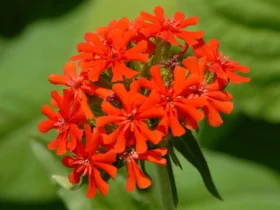In the lush cloud forests of the Andes, a breathtaking sight awaits—Brugmansia vulcanicola, commonly known as the Fiery Angel’s Trumpet. With its dazzling display of pendulous flowers and enchanting fragrance, this captivating plant has earned its place as one of the most striking members of the Solanaceae family. Let’s journey into the world of Brugmansia vulcanicola and explore the remarkable qualities that make it a true gem of the botanical kingdom.
Brugmansia vulcanicola iamges
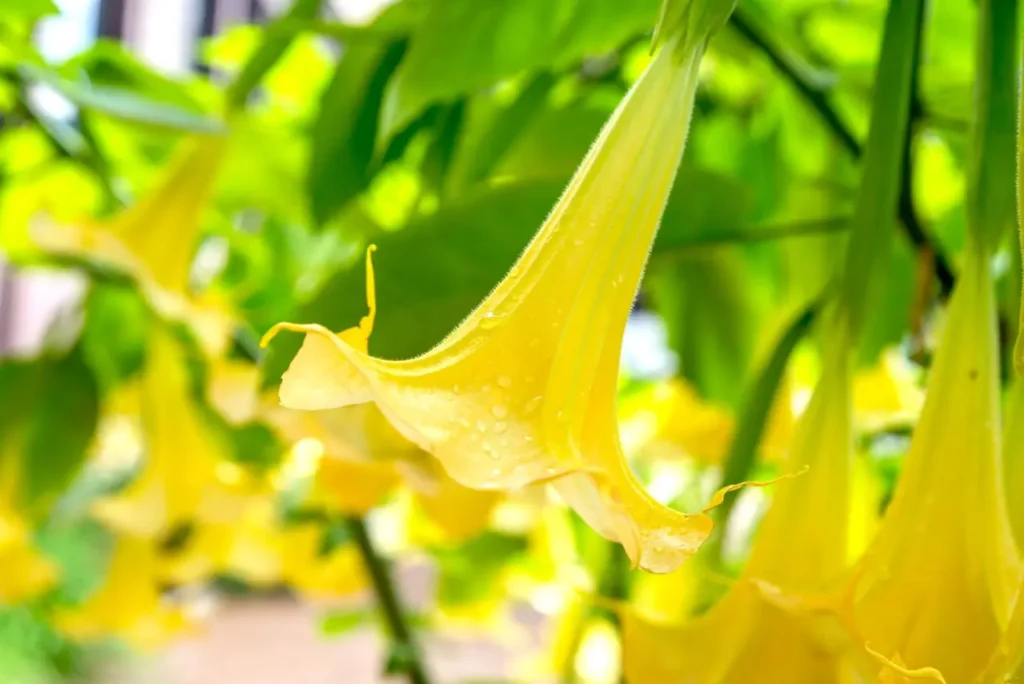
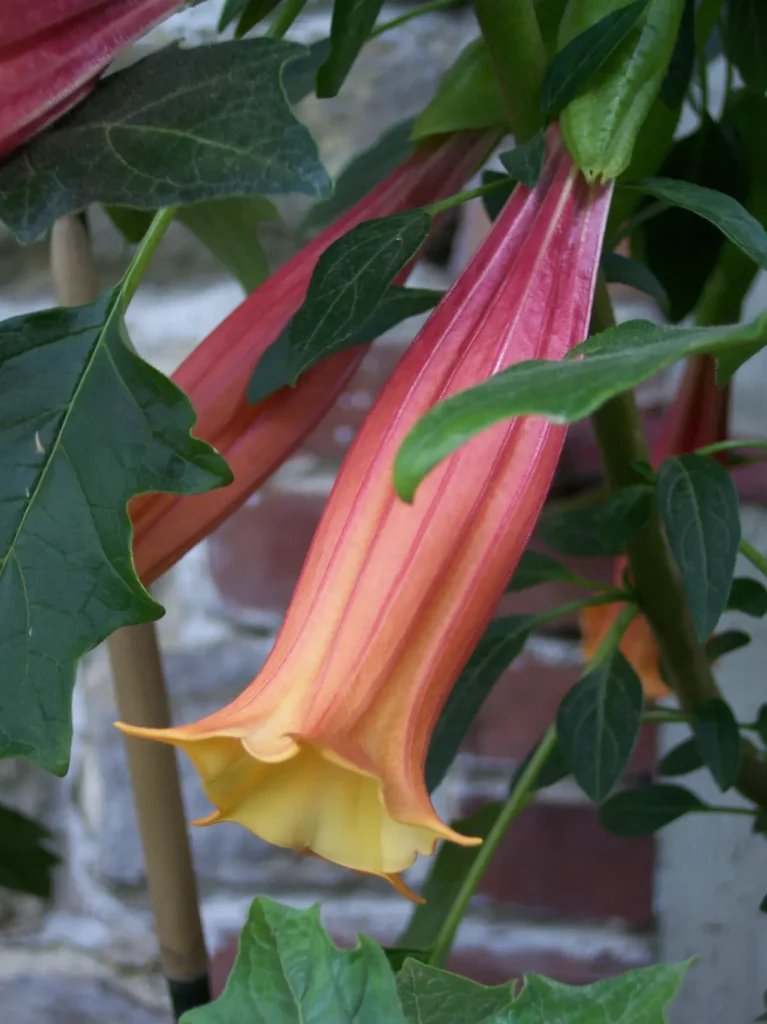
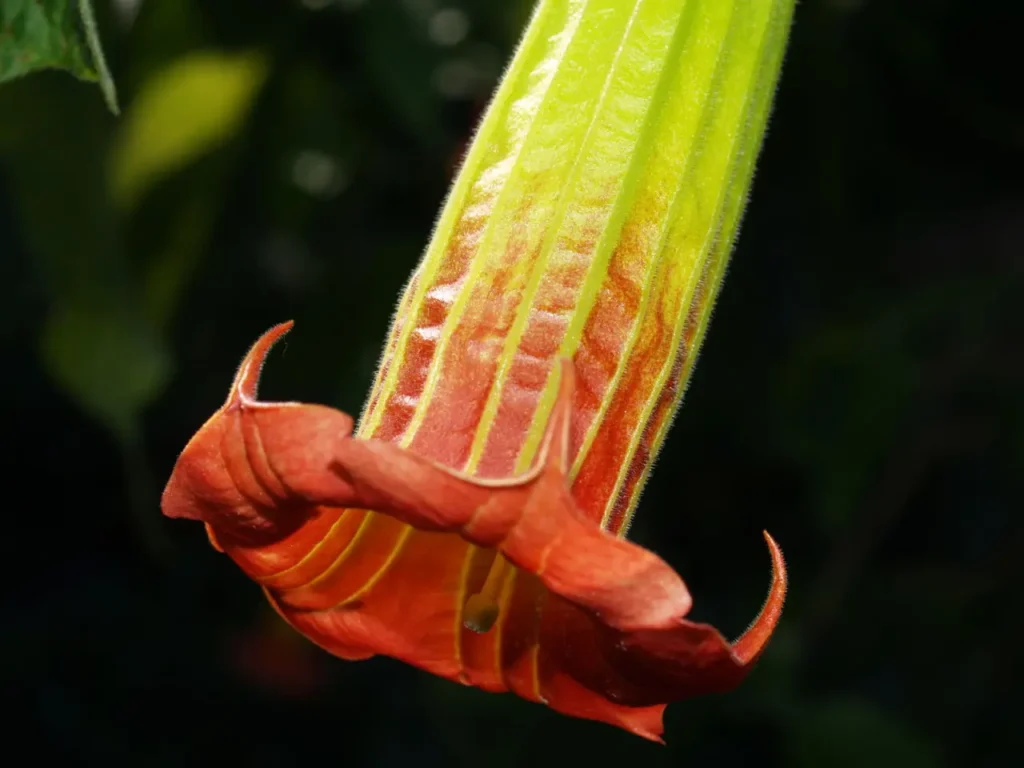
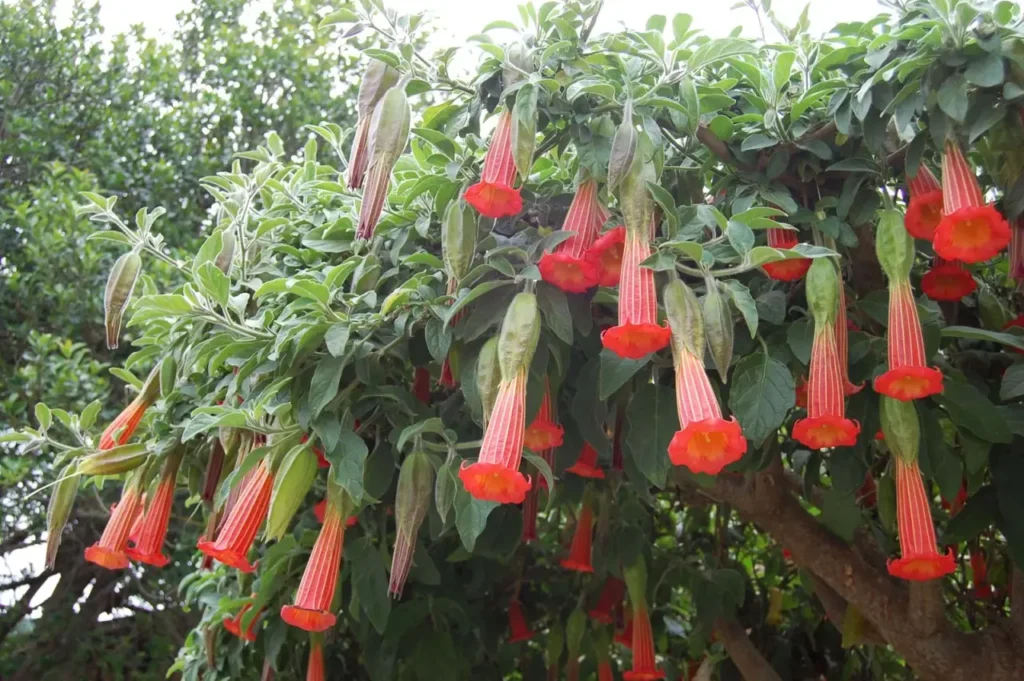
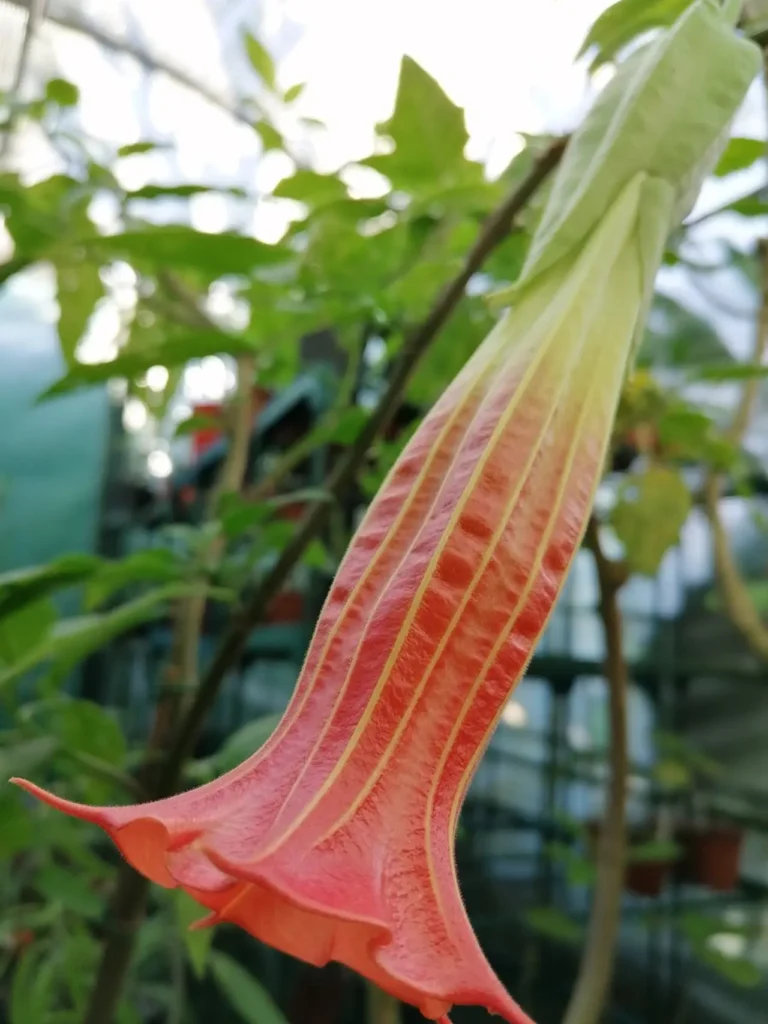
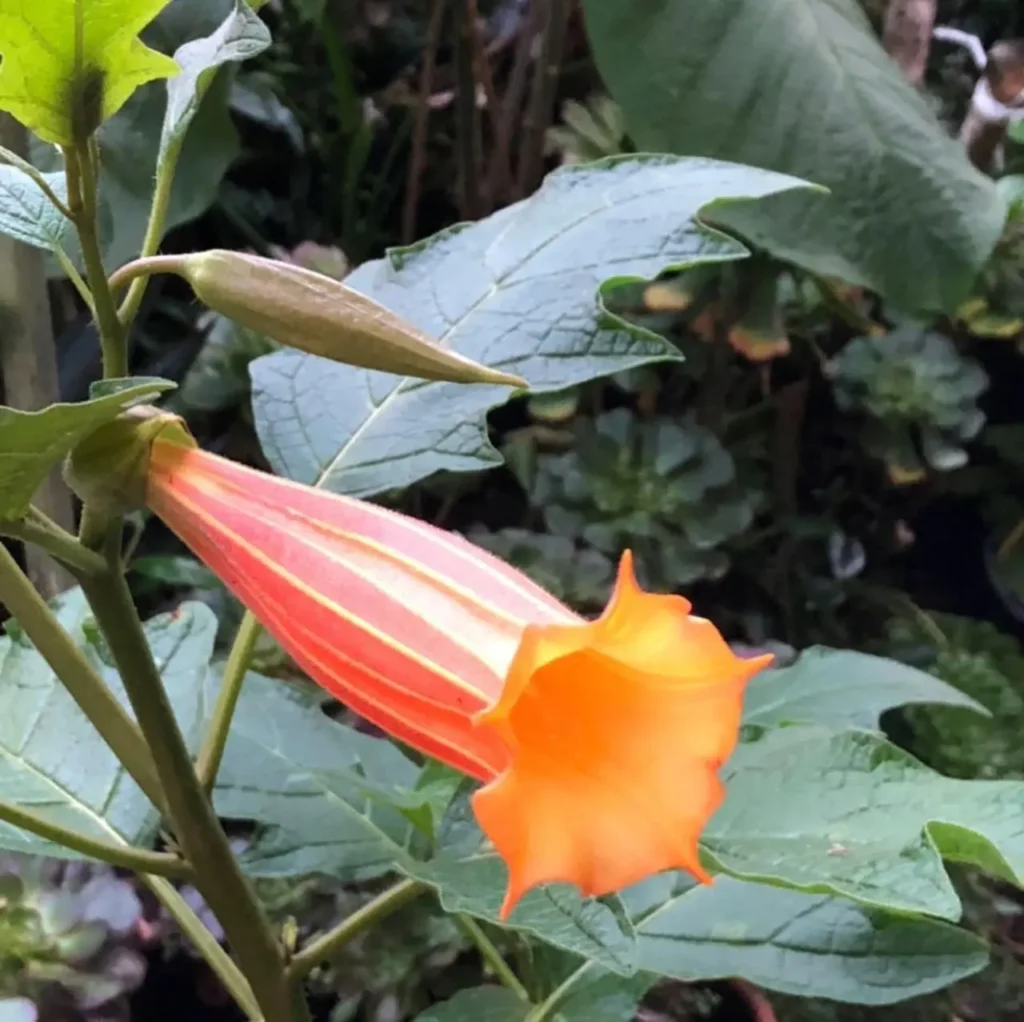
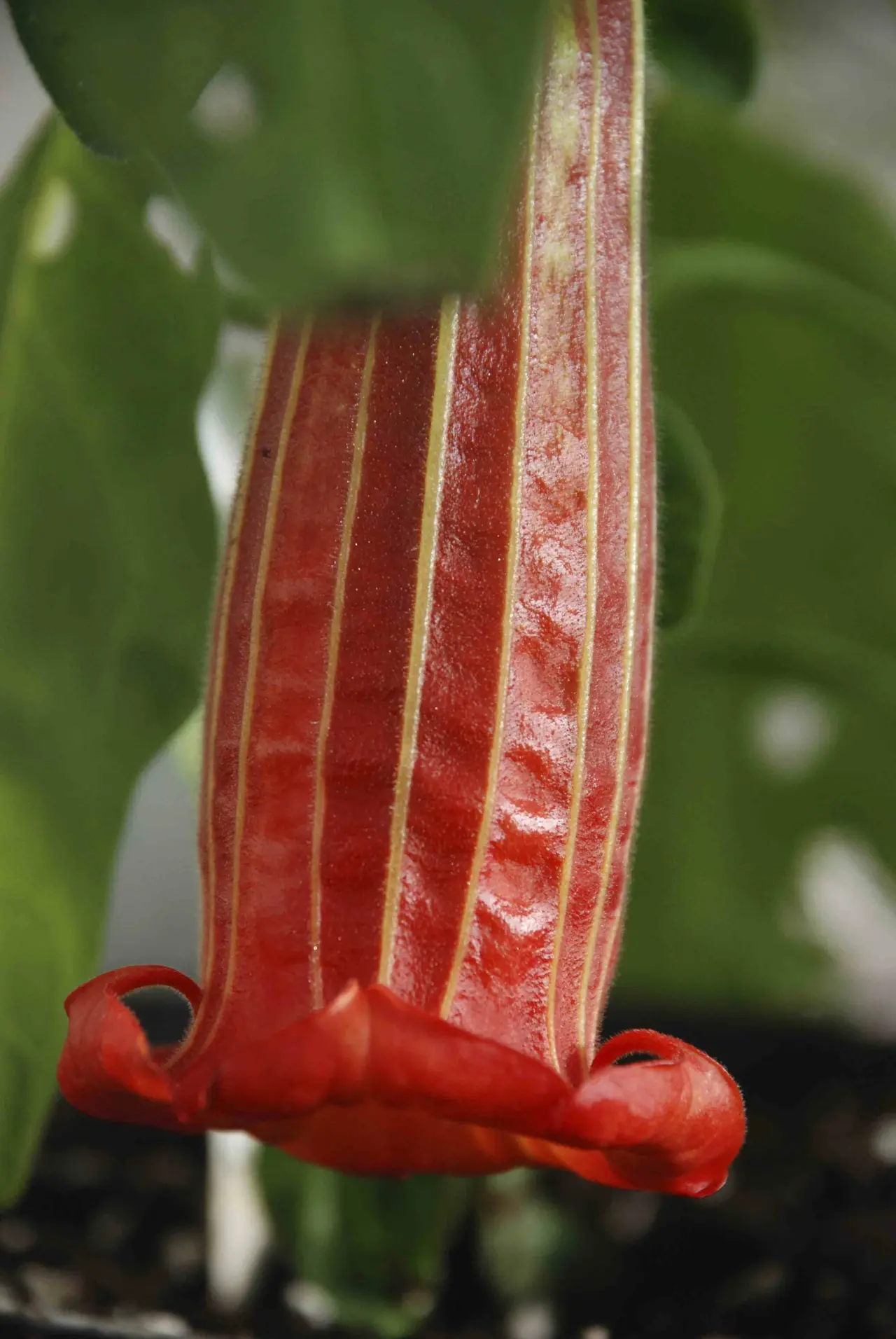
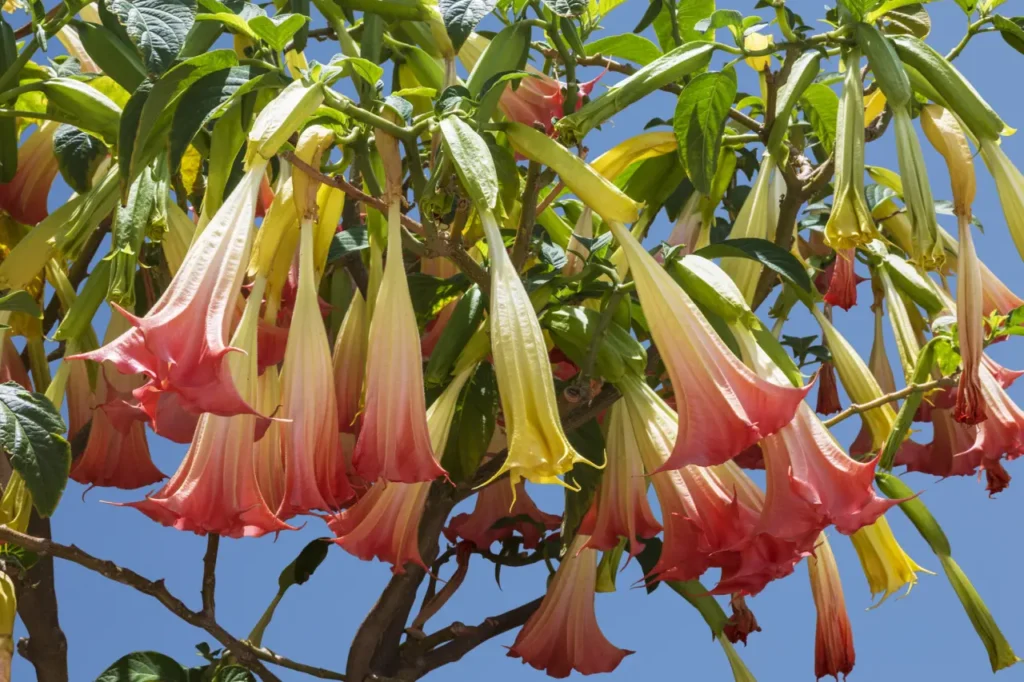
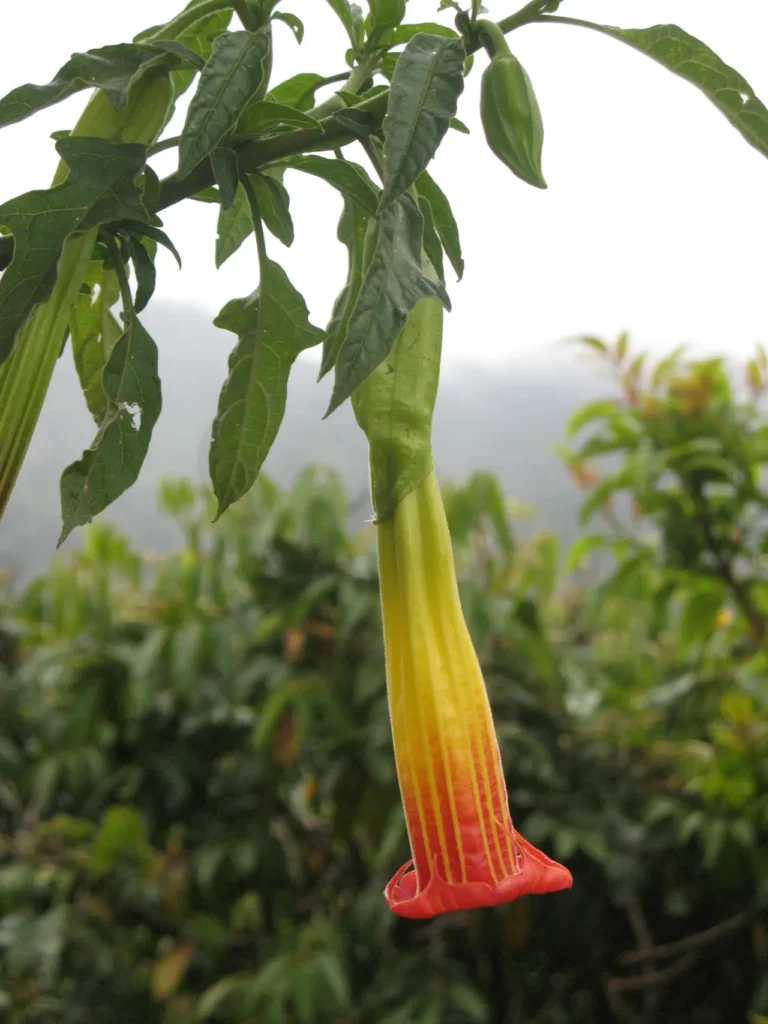
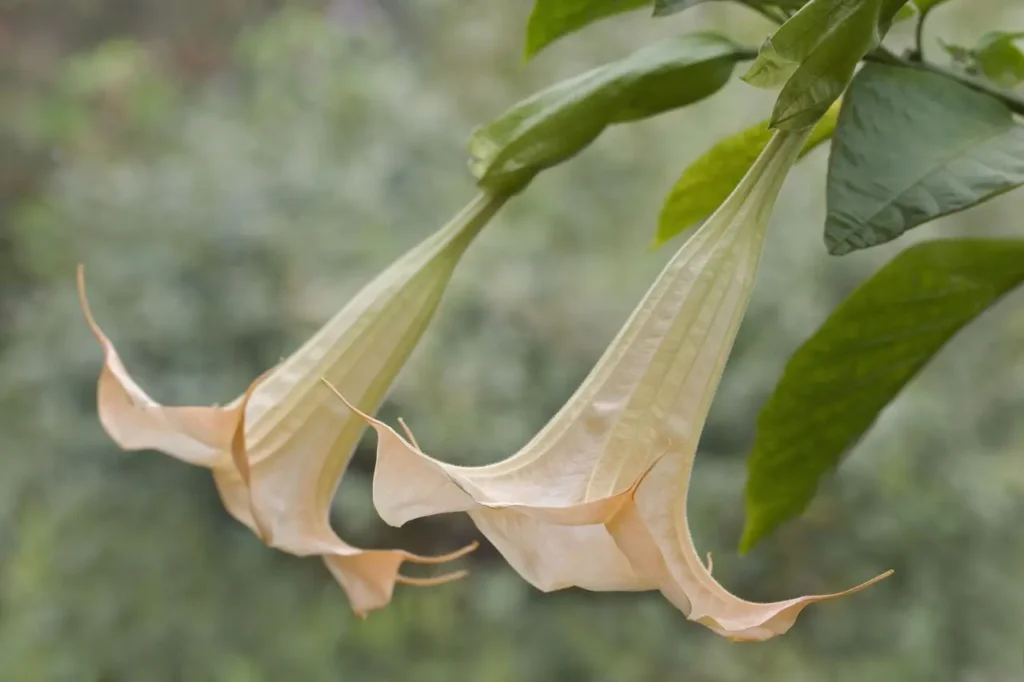
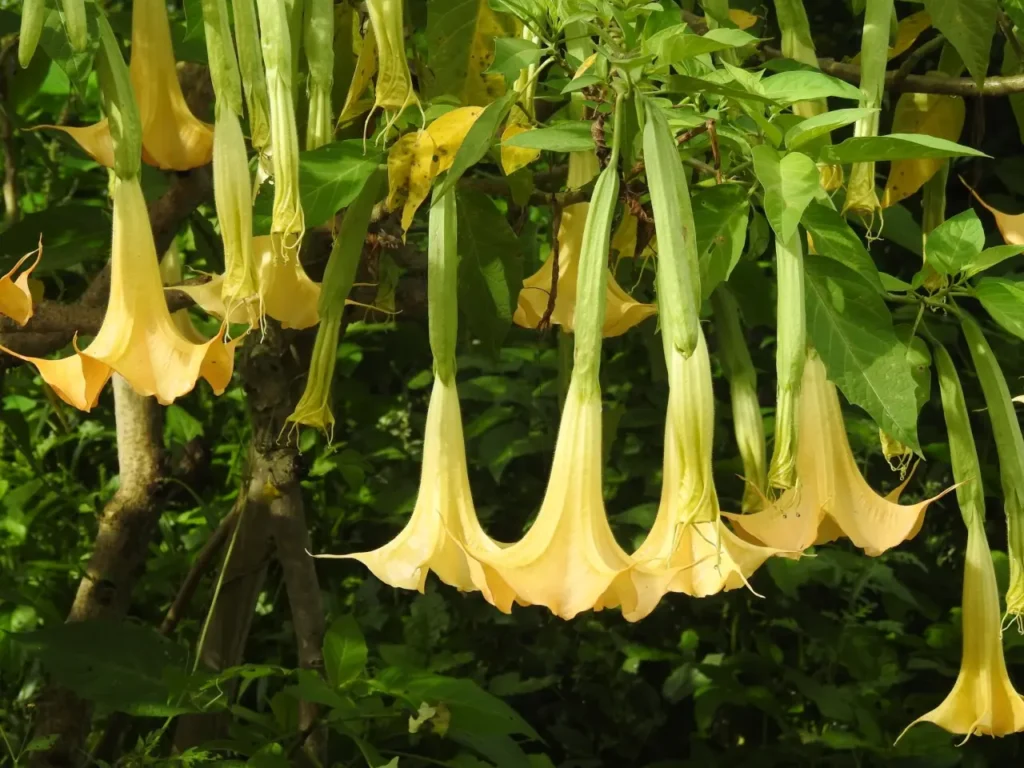
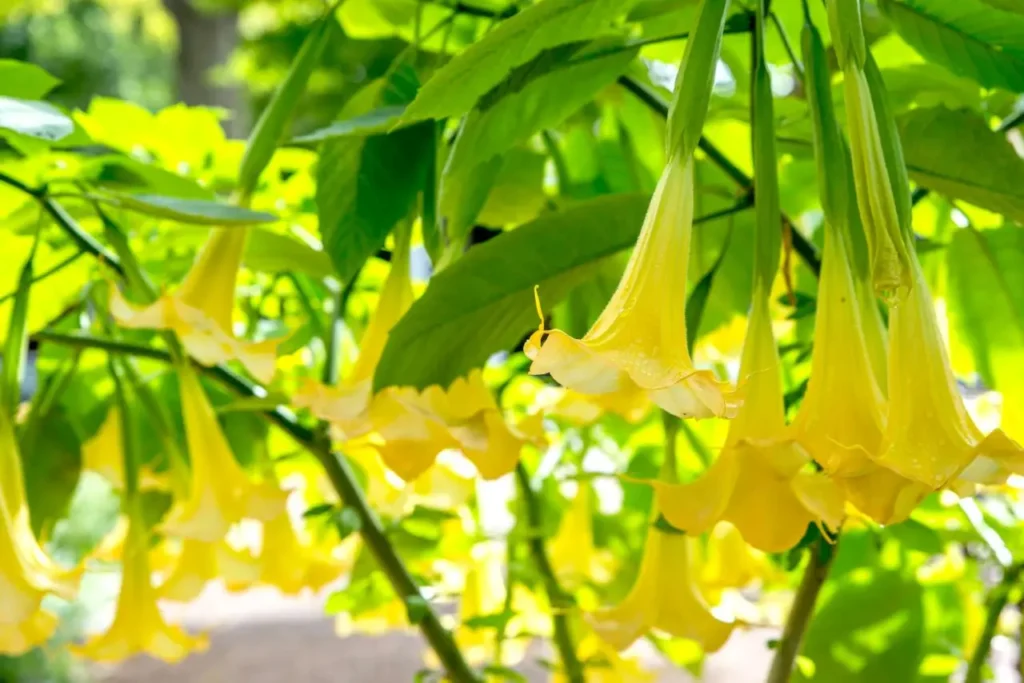
Appearance and Characteristics
Brugmansia vulcanicola is a medium-sized shrub or small tree with woody stems. Its velvety, lance-shaped leaves give it an elegant appearance even when not in bloom. However, it is the flowers that truly steal the show.
The pendulous flowers of Brugmansia vulcanicola are large and trumpet-shaped, measuring up to 15 centimeters (6 inches) long. They hang in clusters and open downward, creating a spectacular display. The flowers come in various shades of yellow, orange, or red, with some specimens displaying a blend of hues.
Habitat and Distribution
As its name suggests, Brugmansia vulcanicola is often found in volcanic regions of the Andes in South America. Its natural habitat includes cloud forests and high-altitude areas with fertile, well-draining soil. These regions provide the ideal conditions for the plant to thrive, with consistent moisture and moderate temperatures.
The plant is native to countries such as Colombia, Ecuador, and Peru, where it is an integral part of the diverse ecosystems it inhabits.
Cultural and Medicinal Uses
Throughout its native range, Brugmansia vulcanicola has been utilized by indigenous communities for various cultural and medicinal purposes. The plant’s properties have been valued for their potential to induce visions and altered states of consciousness during shamanic rituals.
However, it is essential to note that all parts of Brugmansia vulcanicola are toxic and should not be ingested or used for self-medication. The plant contains alkaloids, such as scopolamine and hyoscyamine, which can be harmful or even lethal if ingested in significant amounts.
Horticulture and Cultivation
Brugmansia vulcanicola has also captivated gardeners and horticulturists worldwide, leading to its cultivation in various regions with suitable climates. As a tropical plant, it thrives in warm and humid environments, making it a popular choice for gardens in subtropical and tropical regions.
When growing Brugmansia vulcanicola, it is essential to provide it with well-draining soil, consistent moisture, and protection from intense sunlight, particularly during the hottest part of the day. As a frost-sensitive plant, it should be sheltered or brought indoors during cold winter months in colder climates.
A Fiery Marvel of Nature
Brugmansia vulcanicola, the Fiery Angel’s Trumpet, stands as a fiery marvel of nature, enchanting all who encounter its stunning display of flowers. As we explore the diverse and fascinating world of botanical wonders, the Fiery Angel’s Trumpet reminds us of the beauty and complexity found within the natural world.
By cultivating and admiring these captivating plants responsibly, we ensure that future generations can continue to appreciate the splendor and allure of Brugmansia vulcanicola—a true gem among the floral treasures of the Andean cloud forests.
